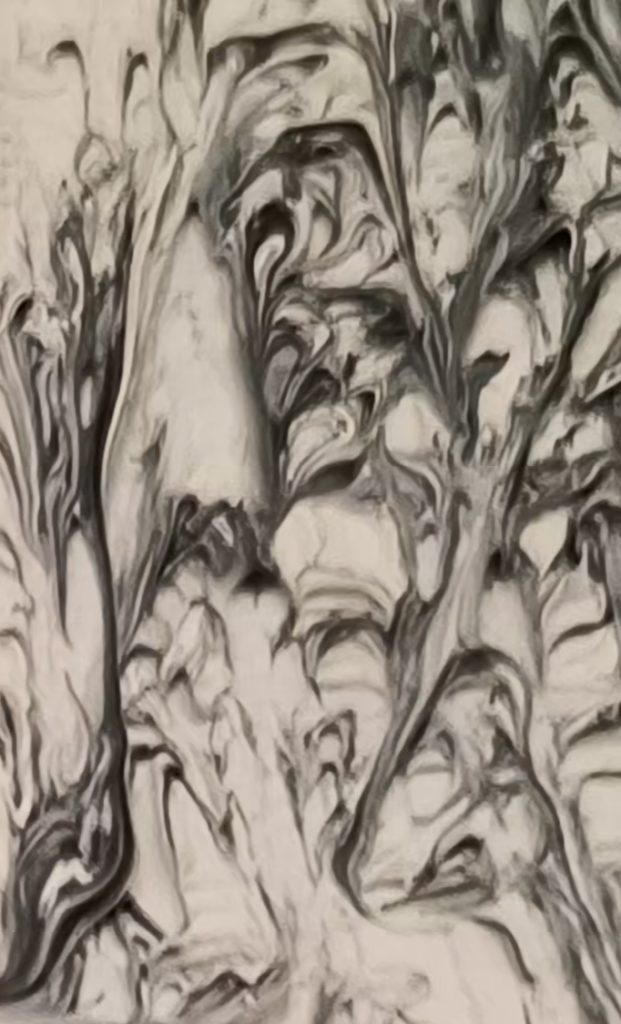What is true freedom? Is it a state of independence from the system, society, or perhaps an internal state that can only be reached through experiencing reality in its purest form? Krzysztof Konopka’s orapism shows that true freedom is born in a moment of delight, in a moment of complete presence, when the mind abandons illusion and allows reality to manifest itself in its fullness.
Delight brings ultimate freedom
Delight, understood not as an emotion, but as a state of deep connection with the present, is a key element of orapistic creativity. This is the moment when the artist, rejecting habitual thinking and ego, immerses himself in reality and allows it to act through himself. In this state, the artist does not create, but becomes creativity. Delight in the moment, in the process itself, in the act of creation – it is this moment that brings ultimate freedom.
Delight as a gateway to the experience of orapism
Orapism is a tool for tracking one’s own consciousness, for discovering what creativity really is when it is stripped of patterns, expectations and concepts. In orapism, INATION plays a key role – a state in which the artist stops analyzing and planning, and allows reality to manifest itself through his movements, intuitive gestures, and spontaneous expression.
This moment is delight. It is a state in which we stop being afraid, do not try to control, do not judge – we simply are. In traditional art, delight often appears as the final effect – when the artist looks at his work or when the recipient admires the finished painting. In orapism, delight is part of the process, it is the driving force of the creative act, which is authentic because it does not result from thinking, but from direct experience.
Delight in the moment allows the artist to transcend his limitations, dissolve the ego, and become a pure expression of reality. This is a moment of true freedom – freedom from the past, the future, social and cultural limitations, and above all, freedom from oneself, from one’s own illusions and habitual thinking.
Freedom in art and freedom in life
Delight that leads to freedom is not limited only to the creative process. Orapism shows that art and life are one. If we are able to paint, draw, create in a state of delight, we can also live in a state of delight – to be fully present in every moment, seeking nothing more in it than the experience of existence itself.
Most people live in patterns that do not allow them to feel true freedom. They are trapped in their habitual reactions, in the fear of error, in the need for control. The Orapist artist liberates himself from this because he does not think about the result – he allows himself to be led by energy, surrenders to the moment, allows the work to arise by itself in a spontaneous creative process.
This freedom can be transferred to every aspect of life. If in art we allow ourselves to be delighted and spontaneous, we can also learn in everyday life not to control everything, not to overanalyze, not to live in fear of evaluation or failure. Freedom in art therefore becomes a training in freedom in life – we learn to be present, to feel the fullness of the moment, to let things happen instead of constantly controlling them.
What is ultimate freedom?
The freedom that Orapism speaks of is not political, social or economic freedom. It is something much deeper – it is liberation from the illusions that limit our experience of reality.
Ultimate freedom is a state of complete acceptance of what is. It is the moment when we stop fighting with the world and ourselves, when we allow reality to be as it is. Ultimate freedom is delight in existence itself, in the movement of the hand, in the trace of paint on the canvas, in the accidental shape that appears in the act of creation.
Thus, delight is the purest manifestation of freedom – it cannot be forced, planned or taught. Delight is born when the mind is open, when we allow ourselves to be without expectations and without fear.
In this sense, Orapism is the art of freedom – an art that is not subject to conventions, does not strive for perfection, does not seek recognition, but simply is.
From Delight to Freedom
“Delight brings ultimate freedom” – this sentence in the context of Krzysztof Konopka’s Orapism takes on a profound meaning. Orapism shows that true art is not the result of intellectual calculations, but is an act of total immersion in the present moment.
When an artist allows himself to be delighted by the creative process itself, his art becomes authentic – it does not result from the ego, but from pure experience. In this state, delight and freedom intertwine, leading to an experience that is no longer just “creation”, but is a true expression of existence.
Ultimate freedom is allowing oneself to be fully present, without fear of error, without the need for control, without looking for meaning where it is unnecessary. Delight is the key to this freedom – because only when we allow
